How to Buy the Correct Chainsaw Chain Replacement
- June 26, 2024
- 0 comment
Buying the right chainsaw chain doesn’t have to be tough. This guide strips away the confusion and simplifies the process. We’ll explain everything you need to know to pick the best chain for your chainsaw, ensuring it works perfectly for your cutting needs every time. Get ready to learn how to match the right chain to your chainsaw without any hassle.
The Challenge of Choosing the Right Chain
Ordering a new chainsaw chain isn’t just about knowing the length of your chainsaw’s bar or the model. It involves understanding the unique characteristics of your chainsaw’s bar, such as its length, width, and style, which can affect the type of chain needed.

For example, even if two chainsaws appear to have bars of the same length, differences in the width of these bars could mean they require chains with different numbers of drive links. This makes it important to look beyond basic measurements and consider specific details that dictate which chain fits best.
Key Measurements for Choosing the Right Chainsaw Chain
To ensure you order the correct chain, you need to determine three crucial measurements from your chainsaw: the pitch, the gauge, and the number of drive links. These measurements are often found stamped directly on the bar and sometimes on the chain itself.
1. Pitch
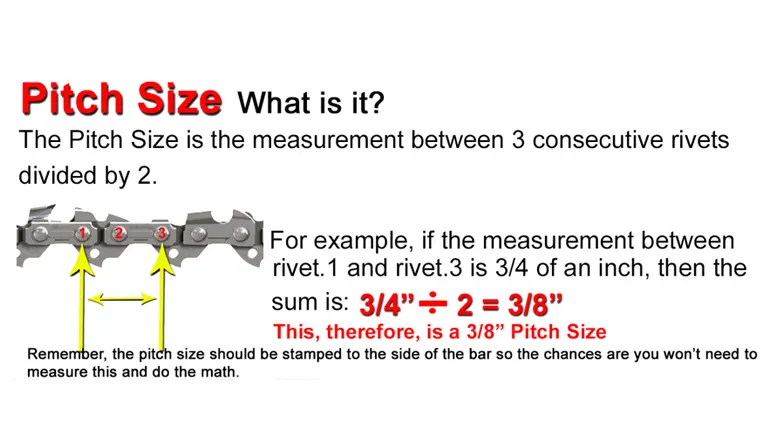
- Definition: The pitch of a chain refers to the distance between three consecutive rivets, divided by two.
- Common Sizes: The pitch can be one of several sizes, such as 1/4″, 3/8″, .325″, or .404″.
- Finding the Pitch: Typically, the pitch is stamped on the bar. For example, you might see “3/8” stamped, indicating the pitch size.
2. Gauge
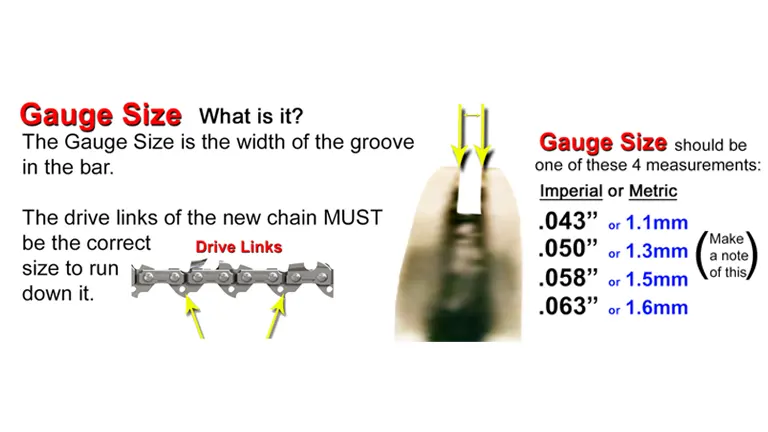
- Definition: The gauge is the thickness of the drive links and must fit precisely into the bar’s groove.
- Common Sizes: Gauges can range from .043″, .050″, .058″, to .063″.
- Locating the Gauge: This measurement is usually found on the bar, often stamped next to the pitch. It may be presented in either imperial (inches) or metric (millimeters) measurements.
3. Number of Drive Links
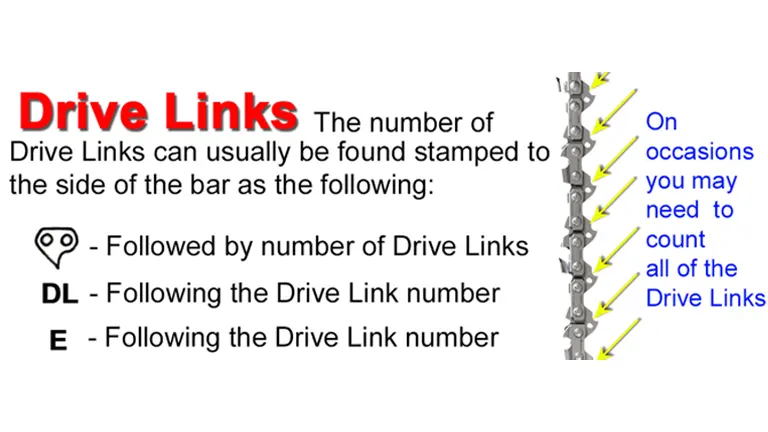
- Importance: The total number of drive links affects the chain’s length and must match the bar’s capacity.
- Counting Drive Links: While often stamped on the bar, the best practice is to count the links directly if you’re unsure or if the bar lacks this information.
Steps to Accurately Select the Right Chainsaw Chain
- Remove the Bar: Start by removing the bar from your chainsaw to expose any numbers or markings that indicate key measurements. This is crucial as it provides clear access to the details stamped towards the end of the bar.
- Record the Numbers: Carefully note down the pitch, gauge, and number of drive links indicated on the bar. These numbers are critical as they determine the precise specifications of the chain needed for your chainsaw.
- Verify Information: Double-check these measurements by examining both the existing chain and the bar for any additional stamps or markings. This step ensures that the numbers recorded are accurate and consistent, providing an extra layer of verification.
What If Information Is Missing?
If you find that your chainsaw’s bar lacks clear markings or if the saw itself has a murky history due to being secondhand, you might need to take a few extra steps to ensure you purchase the correct replacement chain:
- Inspect the Chain for Markings: Carefully examine the existing chain for any brand names, model numbers, or other identifiers. These markings can often provide crucial clues about the type of chain you need.
- Measure Manually: If the necessary information is not available or if you’re uncertain about the details, take the time to manually measure the pitch and gauge of the chain. Additionally, count the number of drive links yourself. This manual verification can help you ensure that you purchase a chain that fits perfectly.
Recommended Chainsaw Chains for Various Uses
After understanding how to choose the correct chainsaw chain, consider these highly recommended options known for their durability and performance:
Oregon S56 AdvanceCut Chainsaw Chain
Ideal for homeowners or DIY enthusiasts, this chain is compatible with a wide range of chainsaw models and offers great cutting performance for general yard tasks.
Stihl Oilomatic Rapid Micro Chain
Known for its low vibration, this chain is perfect for cutting firewood and other medium-duty tasks. It’s highly durable and offers excellent cutting efficiency.
Husqvarna H30 Pixel Saw Chain
This chain is designed for professional use, offering a high cutting performance that’s easy to maintain and less likely to stretch over time.
Echo PowerCut Chain
Suitable for professional woodcutters, this chain offers great durability and a powerful cutting performance, designed to handle large trees and thick branches.
Makita Saw Chain
This is a great option for users of Makita chainsaws, providing smooth and efficient cuts with a lower chance of kickback.
Each of these chains has been selected based on its reliability, performance, and compatibility with different chainsaws. Be sure to match the chain specifications with your chainsaw’s requirements, considering the pitch, gauge, and the number of drive links for optimal performance.
Troubleshooting Common Issues
- Chain Stalls During Cutting: If the chain stalls during a cut, check for dull blades or improper tension. Sharpen the chain if it’s dull, and adjust the tension if the chain is too loose or too tight.
- Chain Comes Off the Bar: This usually indicates an issue with tension. Make sure the chain is not too loose. Adjust the tension screw to tighten it until it fits snugly against the bar without sagging.
- Excessive Vibration: Excessive vibration can be due to a loose chain or worn out drive links. Check the tightness of the chain and replace it if the drive links are damaged or excessively worn.
- Difficulty Cutting Straight: If the chainsaw cuts at an angle or won’t cut straight, the chain might be unevenly sharpened or the bar could be bent. Sharpen the chain evenly on both sides or replace the bar if it’s bent.
- Chain Produces Fine Sawdust: Instead of large chips, fine sawdust indicates a dull chain. Sharpen the chain to restore its cutting efficiency.
- Rapid Chain Wear: Rapid wear can occur if the chain isn’t lubricated properly. Check the oiler system to ensure it’s functioning and delivering enough oil to the chain.
- Chain Gets Hot and Smokes: This is usually a lubrication problem. Ensure the oil reservoir is full and the oiler is not clogged.
- Saw Doesn’t Cut: If the saw doesn’t cut, despite the motor running, it could be that the chain is installed backward. Check the direction of the teeth to ensure they face the right direction.
- Excessive Chain Stretch: If the chain stretches soon after installation, it may be of low quality or it’s being used too aggressively. Consider using a higher-quality chain or adjust your cutting technique.
- Oil Not Reaching the Chain: If the chain isn’t getting lubricated, check for a clogged oil port or a problem with the oil pump. Clean the port and check the pump for functionality.
Conclusion
Understanding the specifications needed to purchase the right chainsaw chain can save time, money, and frustration. Armed with the pitch, gauge, and number of drive links, you can confidently order the correct chain, ensuring your chainsaw operates efficiently and safely. If ever in doubt, consult with a professional to avoid the pitfalls of incorrect chain sizing.
FAQs
- What do I do if no specifications are stamped on my chainsaw bar?
If there are no specifications on your bar, check the user manual for your chainsaw or consult the manufacturer’s website for model-specific information. If these aren’t available, consider taking the chainsaw to a professional for identification. - How do I verify that I’m buying a high-quality chain?
Look for chains made by reputable manufacturers and check online reviews to see how others rate their durability and performance. Always purchase from authorized dealers to ensure authenticity and quality. - Can I use a different brand’s chain on my chainsaw?
Yes, as long as the chain’s specifications (pitch, gauge, and drive link count) match those required for your chainsaw. However, it’s often recommended to use the same brand as your chainsaw to ensure optimal compatibility and performance. - What are the risks of choosing the wrong chain size?
Using the wrong chain size can lead to poor cutting performance, increased wear and tear on both the chain and the chainsaw, and can be a significant safety risk due to increased chances of kickback. - How often should I replace my chainsaw chain?
Replace the chain when it becomes dull and difficult to sharpen, or if it is damaged. The frequency will depend on how often and intensively you use the chainsaw. - Is it better to replace a chain or try to repair it?
If a chain is damaged or excessively worn, it is usually safer and more cost-effective to replace it rather than attempt repairs. - How can I find the pitch and gauge if they are not stamped on the bar?
Measure the pitch by calculating the distance between three consecutive rivets and then divide by two. For gauge, measure the thickness of the drive link where it fits into the bar’s groove. - What does the number of drive links affect?
The number of drive links affects the total length of the chain. It’s crucial for ensuring the chain fits around the bar properly and operates smoothly. - What should I do if my chainsaw cuts unevenly or vibrates excessively?
Check if the chain is installed correctly and evenly tensioned. An unevenly worn or incorrectly installed chain can cause uneven cutting and excessive vibration. - Can I sharpen a chainsaw chain myself, or should I have it professionally done?
You can sharpen a chainsaw chain yourself with the proper tools and techniques, but professional sharpening ensures precision and can extend the life of the chain if you’re unsure of how to do it correctly.
We hope this guide has cleared up any confusion around selecting the right chainsaw chain! Do you have any tips or experiences with chainsaw maintenance you’d like to share? Maybe a question about a specific chainsaw model? Drop a comment below—we’d love to hear from you and keep the discussion going. Your insights could help fellow readers navigate their chainsaw choices even better!

David Murray
Forestry AuthorI'm David Murry, a forestry equipment specialist with a focus on chainsaw operation. With over 13 years of experience, I've honed my skills in operating and maintaining a wide range of machinery, from chainsaws to log splitters. My passion for the outdoors and commitment to sustainable forestry drive my work, which emphasizes safety, efficiency, and staying updated with industry advancements. Additionally, I'm dedicated to sharing my expertise and promoting environmental awareness within the forestry community.

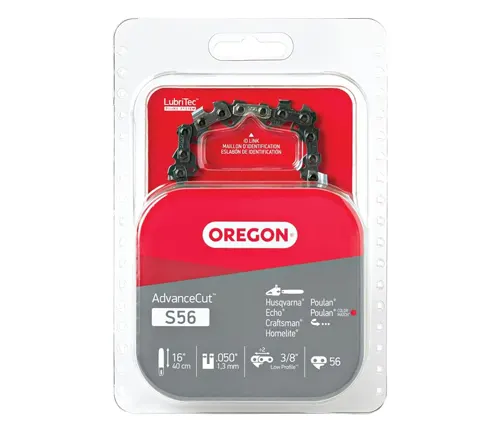
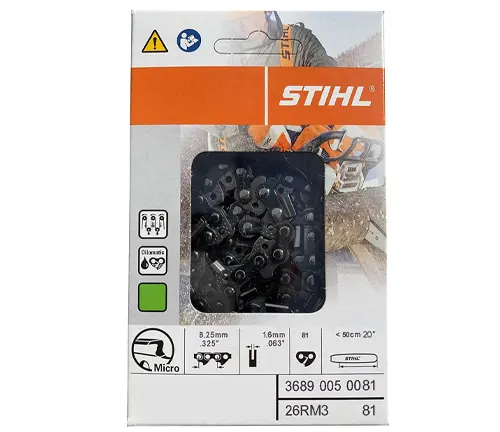
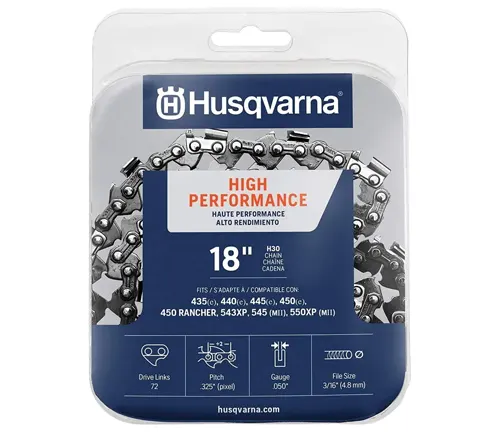

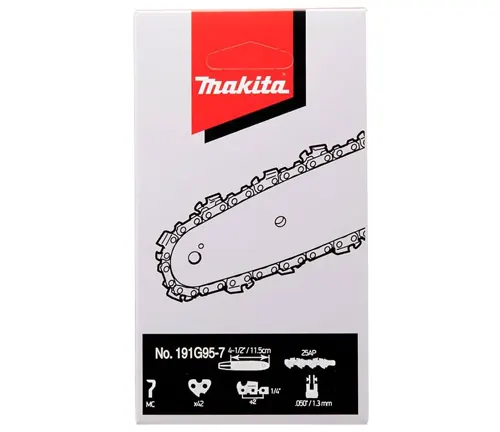





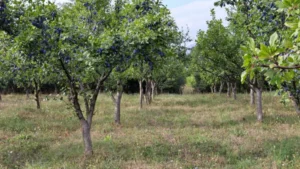
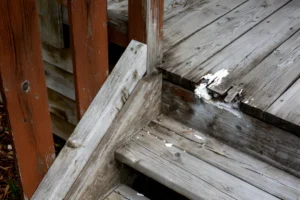





Leave your comment